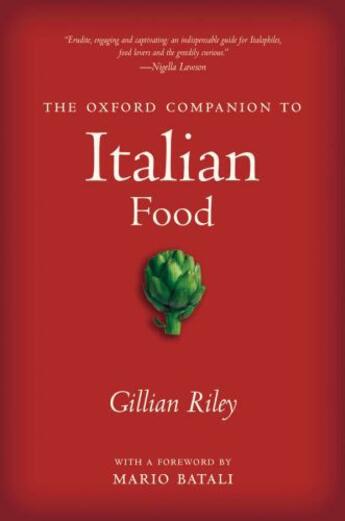Résumé:
Here is an inspiring, wide-ranging A-Z guide to one of the world's best-loved cuisines. Designed for cooks and consumers alike, The Oxford Companion to Italian Food covers all aspects of the history and culture of Italian gastronomy, from dishes, ingredients, and delicacies to cooking methods... Voir plus
Here is an inspiring, wide-ranging A-Z guide to one of the world's best-loved cuisines. Designed for cooks and consumers alike, The Oxford Companion to Italian Food covers all aspects of the history and culture of Italian gastronomy, from dishes, ingredients, and delicacies to cooking methods and implements, regional specialties, the universal appeal of Italian cuisine, influences from outside Italy, and much more.
Following in the footsteps of princes and popes, vagabond artists and cunning peasants, austere scholars and generations of unknown, unremembered women who shaped pasta, moulded cheeses and lovingly tended their cooking pots, Gillian Riley celebrates a heritage of amazing richness and delight. She brings equal measures of enthusiasm and expertise to her writing, and her entries read like mini-essays, laced with wit and gastronomical erudition, marked throughout by descriptive brilliance, and entirely free of the pompous tone that afflicts so much writing about food.
The Companion is attentive to both tradition and innovation in Italian cooking, and covers an extraordinary range of information, from Anonimo Toscano, a medieval cookbook, to Bartolomeo Bimbi, a Florentine painter commissioned by Cosimo de Medici to paint portraits of vegetables, to Paglierina di Rifreddo, a young cheese made of unskimmed cows' milk, to zuppa inglese, a dessert invented by 19th century Neapolitan pastry chefs. Major topics receive extended treatment. The entry for Parmesan, for example, runs to more than 2,000 words and includes information on its remarkable nutritional value, the region where it is produced, the breed of cow used to produce it (the razza reggiana, or vacche rosse), the role of the cheese maker, the origin of its name, Moliere's deathbed demand for it, its frequent and lustrous depiction in 16th and 17th century paintings, and the proper method of serving, where Riley admonishes: "One disdains the phallic peppermill, but must always appreciate the attentive grating, at the table, of parmesan over pasta or soup, as magical in its way as shavings of truffles." Such is the scope and flavor of The Oxford Companion to Italian Food.
For anyone with a hunger to learn more about the history, culture and variety of Italian cuisine, The Oxford Companion to Italian Food offers endless satisfactions.














